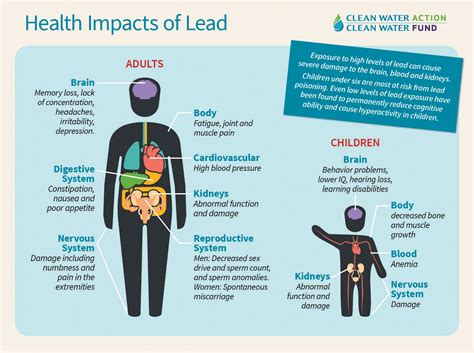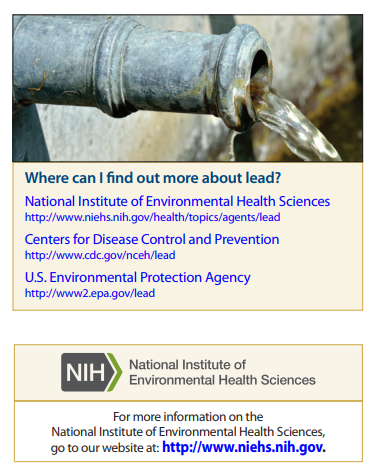Lead Contaminated Water: Boise Schools test 100 times the limit set by the EPA

Local News reports that 23 schools in the Boise area have a water faucets exposing students to elevated levels of lead. Lead is toxic, and if it makes its way into the still-developing brains of young children, many of the effects can be permanent. Lead can change how signals are passed within the brain, how memories are stored, even how cells get their energy, resulting in life-long learning disabilities, behavioral problems, and lower IQs.
The news report came out November 30, 2018 regarding the Boise School District. Tests for lead at water faucets and fixtures at 27 schools across the district and of the more than 1,000 tests conducted, nearly 200 tested at elevated levels (above 15 parts per billion) of lead. The tests above the limit span across 23 schools in the district.
Borah, Capital, Hillside and Whittier all had at least one faucet or fixture with test results more than 100 times the limit set by the EPA (0.015 mg/L).
After Fairmont Jr. High School saw elevated results in a test for lead, Boise School District officials say they began supplying water to the 27 schools and began tests of the faucets and fixtures that could be at risk of elevated lead levels.
Since October, more than 1,000 tests have been conducted and the nearly 200 fixtures and faucets which tested at elevated levels are in the process of being removed and replaced. In the meantime, the District says it will continue to provide drinking water to those schools, as they have since the initial positive test.
While 23 schools saw at least one faucet with elevated lead numbers, Capital High School saw the most test results (44) above the 0.015 mg/L limit set by the EPA. Whittier Elementary School had 22 results above the EPA limit.
When cells in the brain absorb lead, it tends to affect the frontal cortex, the area responsible for abstract thought, planning, and attention, and the hippocampus, essential to learning and memory. 1
For a complete list of schools tested and links to each school’s results, click here.
The Boise School District has a page with information about the lead tests and what parents need to know about safety and next steps. You can access that page here.
The following schools had at least one faucet or fixture test with levels above the 0.015 mg/L limit: Borah, Capital, Collister, Fairmont, Fort Boise, Garfield, Hawthorne, Highlands, Hillside, Jefferson, Koelsch, Liberty, Madison, Maple Grove, Monroe, Mountain View, North, Owyhee, Pierce Park, Taft, Valley View, Washington, Whittier.
The following schools had no faucets or fixtures test with levels above the 0.015 mg/L limit: Adams, Boise, Hillcrest, Longfellow.

What are the health effects and dangers of lead?
But the resulting symptoms vary a lot between individuals, says Jay Schneider, a neuroscientist at Thomas Jefferson University “You don’t often see the same kinds of cognitive dysfunction in all kids,” he says. “From what our research has shown, there are very significant differences in the way different brains respond to this particular toxin.” 1
Since lead is stored in the body, a person can get poisoned from exposure to just small amounts of lead over a long period of time (chronic exposure). You do not need to get exposed to just large doses of lead to be poisoned (acute exposure). It can take months or years for the body to get rid of lead. A person will continue to be exposed to lead internally even after the actual exposure to lead stops.
How Does Lead Cause Neurological Damage?
Lead can be ingested, through water or other contaminated substances–the Environmental Protection Agency limits the amount of lead in water to 15 micrograms per liter, though some toxicologists think that limit should be lowered to 10 micrograms per liter. Lead can also be inhaled or sometimes even absorbed through the skin, though lead can’t move from water into skin, so it’s safe to bathe in lead-contaminated water as long as you don’t drink it.
Once it’s in the body, lead competes with calcium to be absorbed by the body. There are lots of factors that can affect just how much of the lead is absorbed, but there is an overall higher absorption rate for lead that is inhaled versus ingested. It sticks to red blood cells—doctors usually test the blood for proof of exposure to lead—and then moves into soft tissues, like the liver and lungs. If lead is absorbed into bones, it can stay there for decades and recirculate in the person’s blood if a bone is broken or when a woman is pregnant, potentially poisoning both the mother and the fetus. The amount the body absorbs depends on the route of exposure. In general, an adult will absorb 10-15% of the lead in the digestive system, while children and pregnant women can absorb up to 50%. People will absorb more lead if they are fasting or if their diet is lacking in iron or calcium.2
A local doctor interviewed by 6 On Your Side said:
“Any neurological effects, (from exposure to the lead contaminated water fountain) Dr. Mark Uranga of St. Luke’ said, from minor exposure like this are very unlikely.”
The U.S. National Toxicity Program states:
The NTP concludes that there is sufficient evidence for adverse health effects in children there is sufficient evidence that blood Pb levels <5 µg/dL are associated with increased diagnosis of attention-related behavioral problems, greater incidence of problem behaviors, and decreased cognitive performance as indicated by
(1) lower academic achievement,
(2) decreased intelligence quotient (IQ),and
(3) reductions in specific cognitive measures.
There is also limited evidence that blood Pb <5 µg/dLis associated with delayed puberty and decreased kidney function in children ≥12 years of age. There is sufficient evidence that blood Pb levels <10 µg/dLin children are associated with delayed puberty and reduced postnatal growth. 3
RESOURCES:

1 https://www.popsci.com/lead-water-what-are-health-effects-dangers#page-2
2 http://www.osh.net/articles/archive/osh_basics_2001_may26.htm
3 National Toxicity Program printable brochure on low levels of lead: https://ntp.niehs.nih.gov/ntp/ohat/lead/final/monographhealtheffectslowlevellead_newissn_508.pdf






